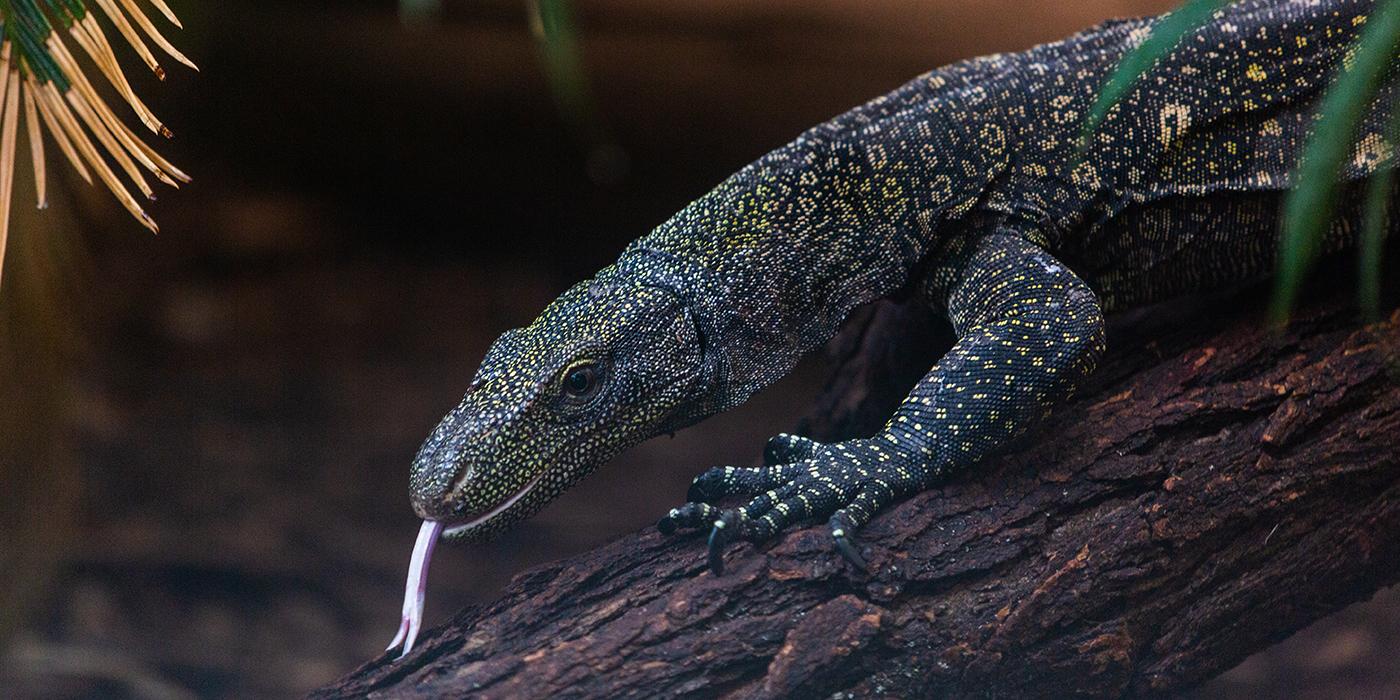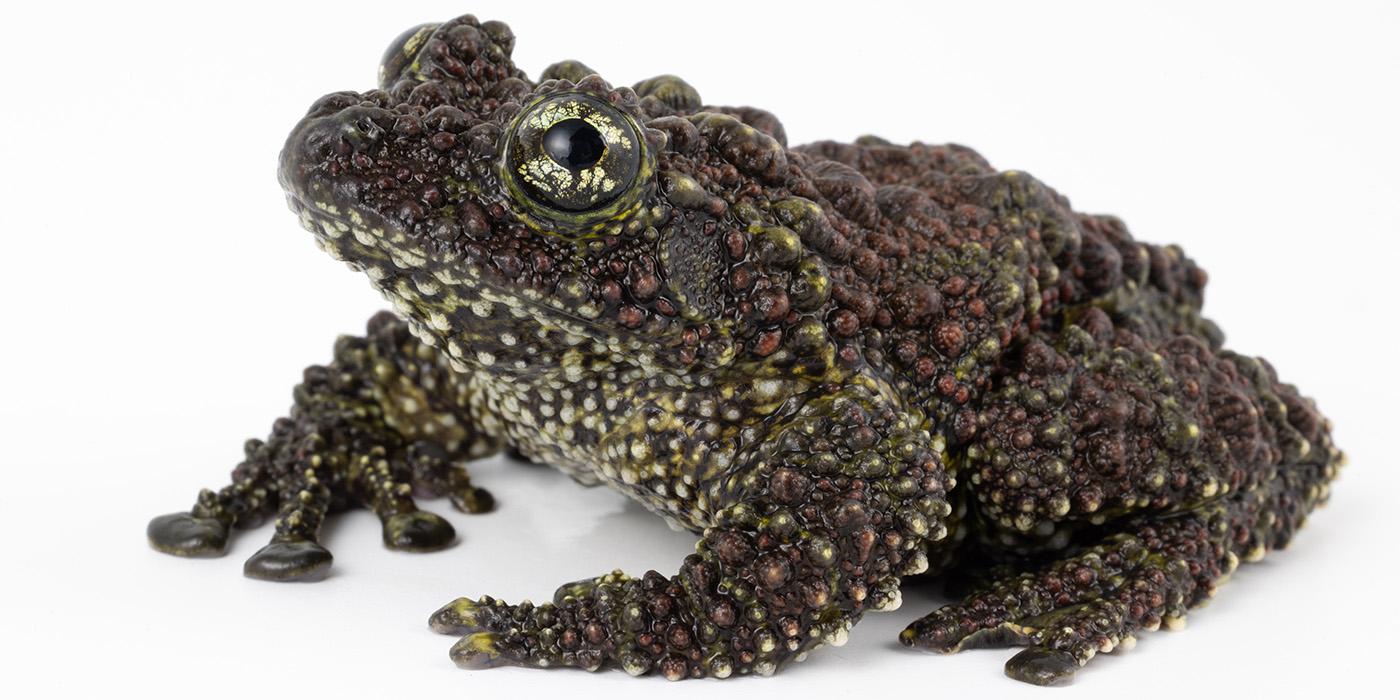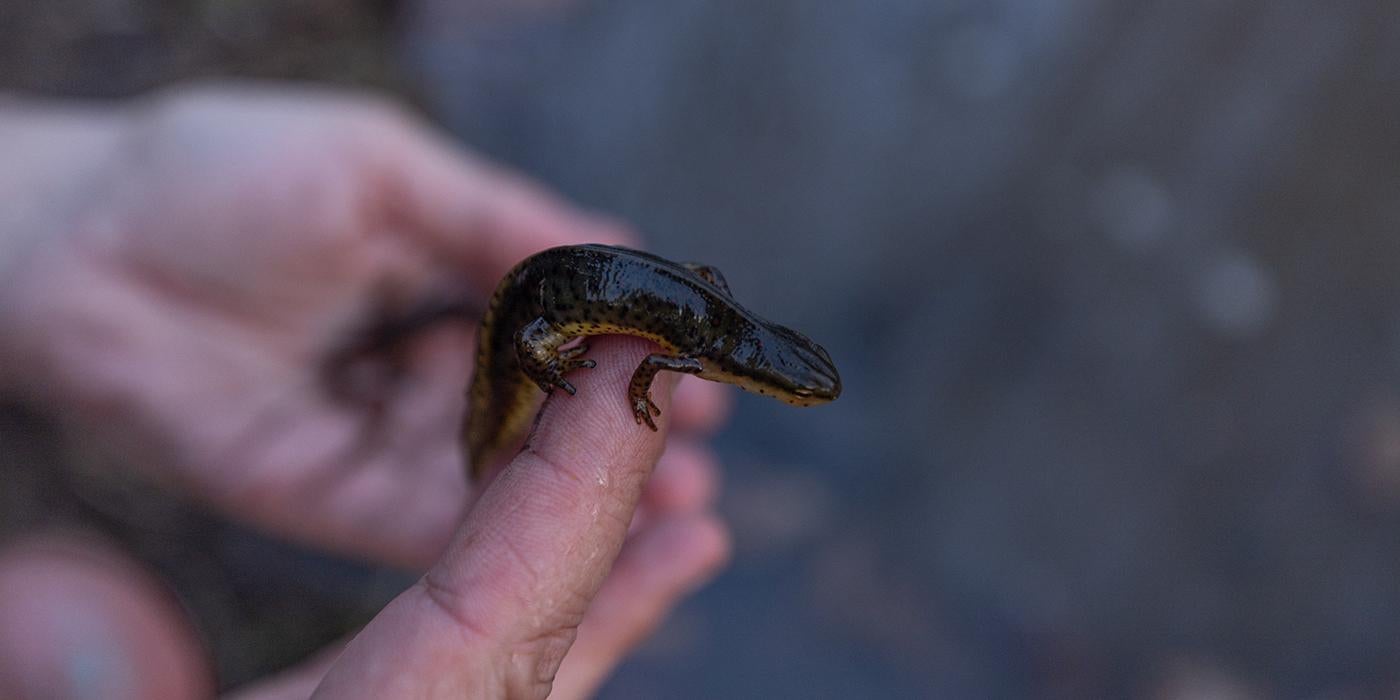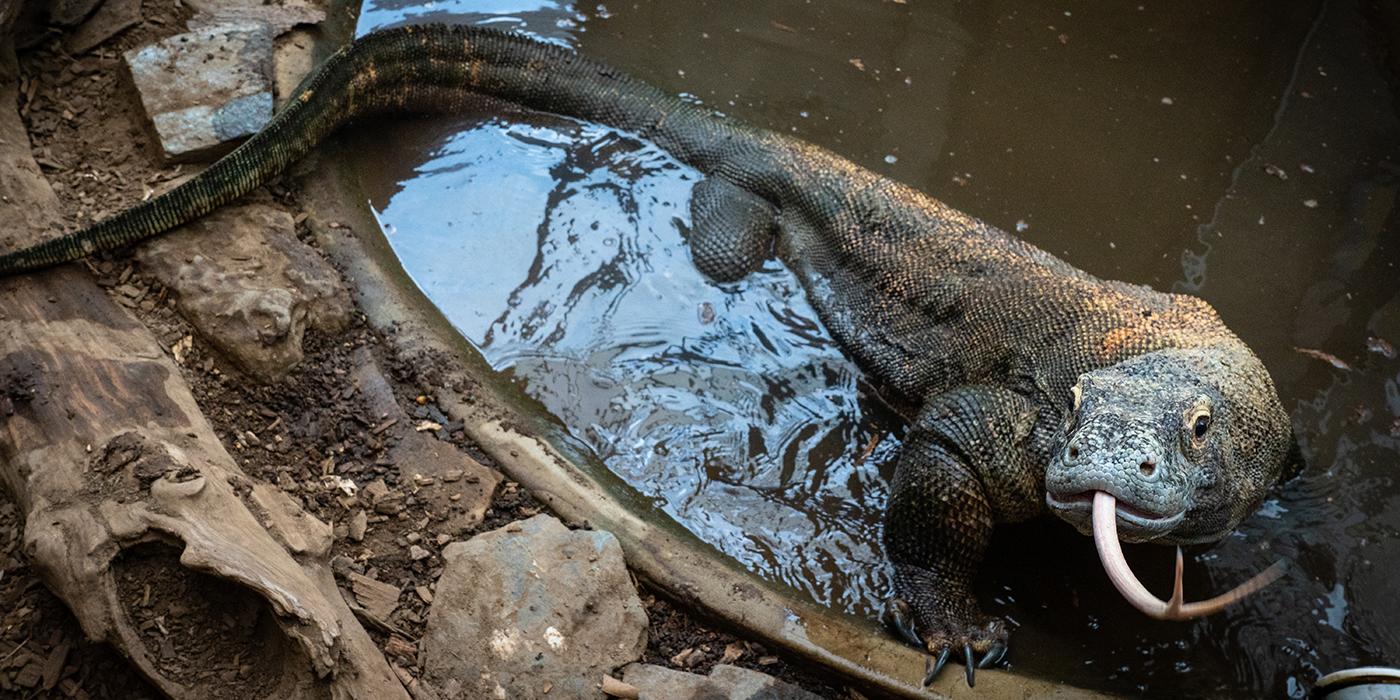New at the Zoo: Crocodile Monitor
What’s that rustle in the trees behind the Reptile Discovery Center? Look up, or you may miss the Zoo’s stealthy male crocodile monitor hiding among the branches! Get the scoop on this cool cold-blooded giant from Reptile Discovery Center assistant curator Matt Evans.
What do visitors want to know about our crocodile monitor?
Where he is! He may be 8 feet long, but his coloration and pattern helps him blend into his surroundings. Sometimes, you have to be patient and look closely to spot him!
Crocodile monitors are well adapted for life in the trees. They use their long tail — which is half their body length — for balance as they quickly move through the branches. Typically, our guy spends the morning and evening basking in the sun on the elevated platforms in his habitat. Often, he can be seen with his head and shoulders hanging off the side of the platform, looking down at visitors. Around midday, he climbs down from his perch to drink, swim in his pool and explore his habitat.

What is his personality like?
He is settling into his habitat nicely, and keepers are beginning to get to know his personality as he becomes more comfortable with his surroundings. Reptiles, by nature, are very territorial, so it can take them a while to really settle in to a new home. To help him acclimate to his surroundings, he spent the standard quarantine period in his habitat, rather than at the Veterinary Hospital. Now, he isn’t shy or wary of his keepers. Actually, he is very food motivated, which comes in handy during training sessions!
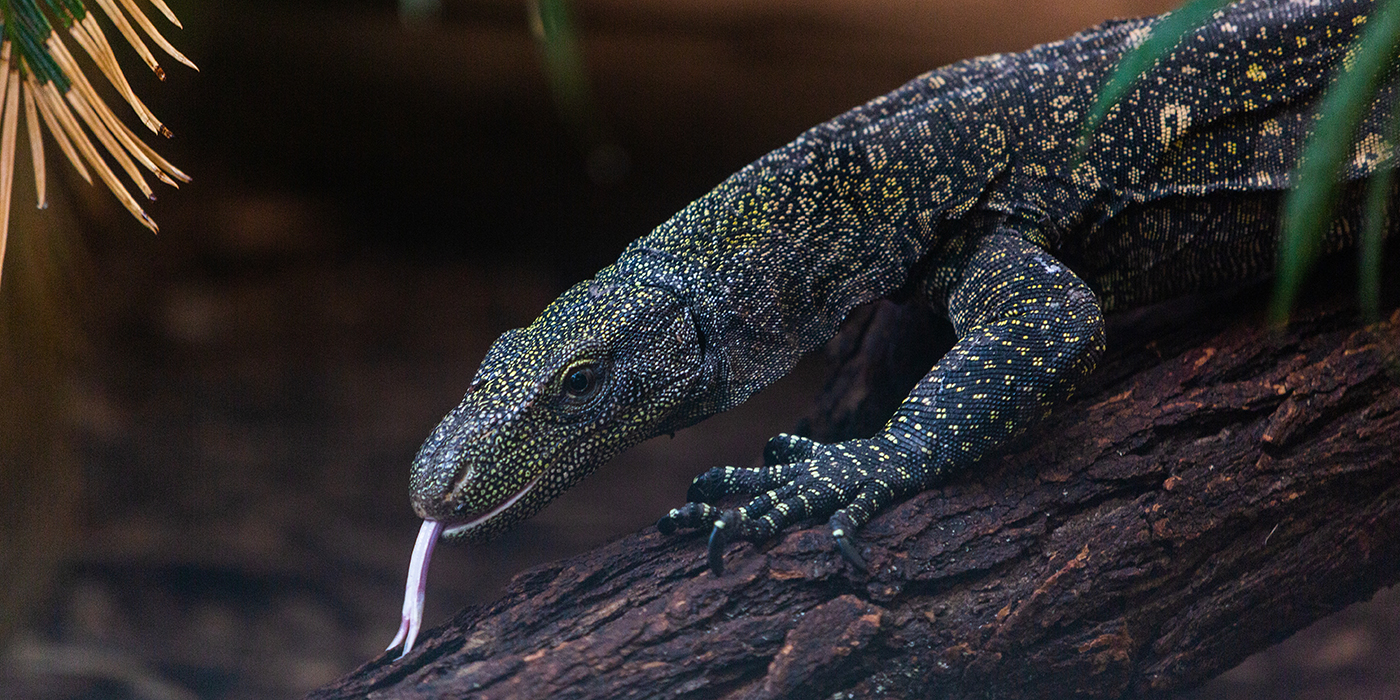
What behaviors are you training?
Because crocodile monitors are such quick, intelligent and potentially dangerous animals, it’s important that we train him to voluntarily participate in his own health care. At first, he wouldn’t come near keepers and would retreat to his favorite hiding spots. Now, though, he comes to us when it is time to be fed.
Recently, we have been training him to enter a long, narrow crate, which our veterinarians use to examine our larger reptiles and administer vaccines or treatments. When he successfully enters and exits the crate on cue, we use long-handled tongs to give him his rewards: frozen-thawed quail, chicks, rats and mice.
We take our cue from his behaviors and move at a pace where he’s comfortable. It’s a key component to our positive reinforcement training program, and it helps build his trust in his keepers and makes routine health checks and medical procedures safer and less stressful for all involved.

Is he venomous?
Most monitor lizards, including Komodo dragons, have venom glands located in their lower jaws which aid them in their ability to take down large prey. That being said, croc monitors are fast, skittish and secretive in the wild, so we don’t know much about them, including whether they share this same deadly adaptation.
Does the Zoo plan to breed crocodile monitors?
That’s our hope! Since this is a new species here at the Zoo, we are trying to learn all we can about his behavior, biology and what it takes to successfully care for a male before we try to pair him with a female. Crocodile monitors can be difficult to breed in human care, but we certainly hope to do so in the future.
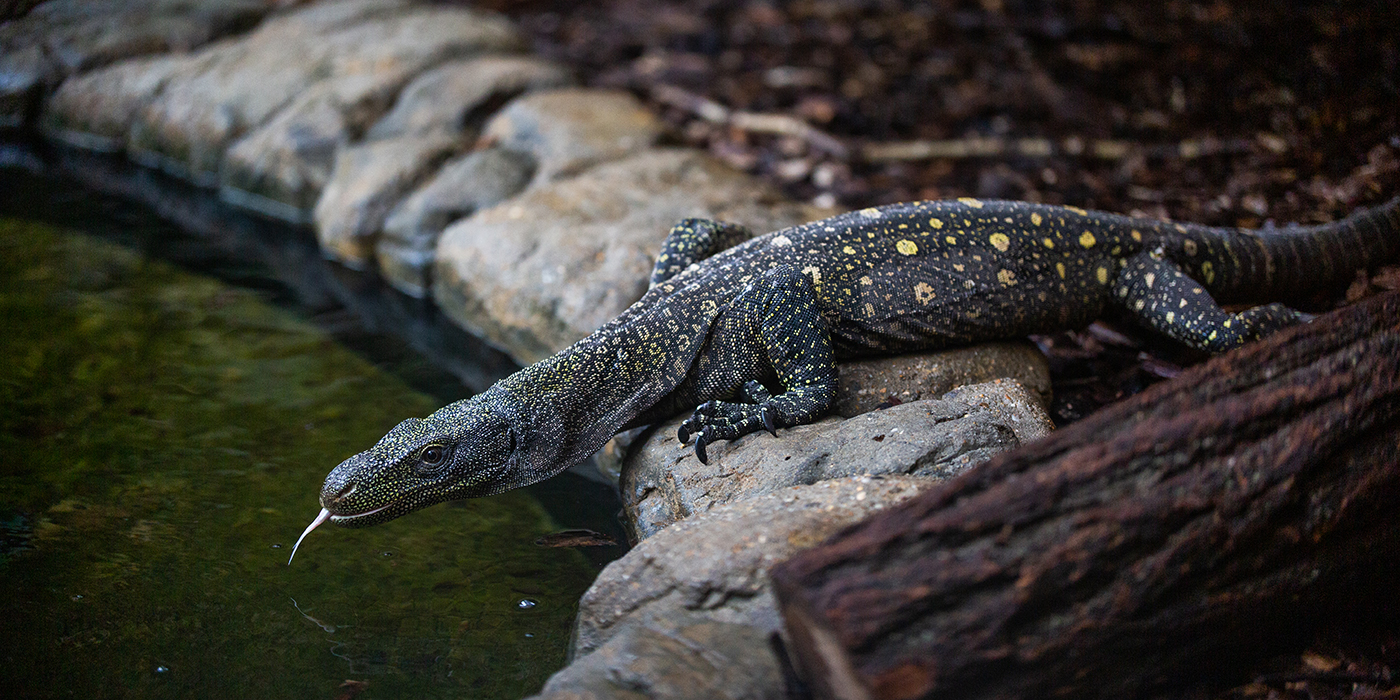
How can readers help crocodile monitors in the wild?
Although crocodile monitor populations are stable at the moment, they are frequently hunted for their skins and their rainforest habitat is being compromised by illegal logging practices. There are three easy ways folks can help this species: never purchase products that came from a wild animal; look for wood and paper products that have been harvested sustainably; and donate to organizations that are helping to save rainforest habitat in Papua New Guinea.
This story appears in the January 2020 issue of National Zoo News. Want an up-close encounter with the Zoo’s reptiles and amphibians? Don’t miss daily keeper talks at 11 a.m. and 3 p.m. at the Reptile Discovery Center.
Related Species:

